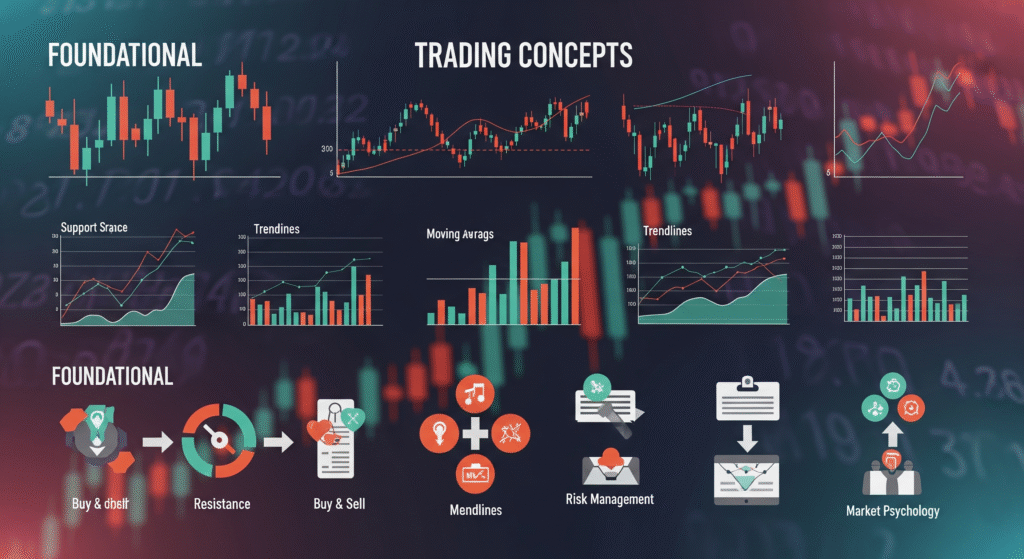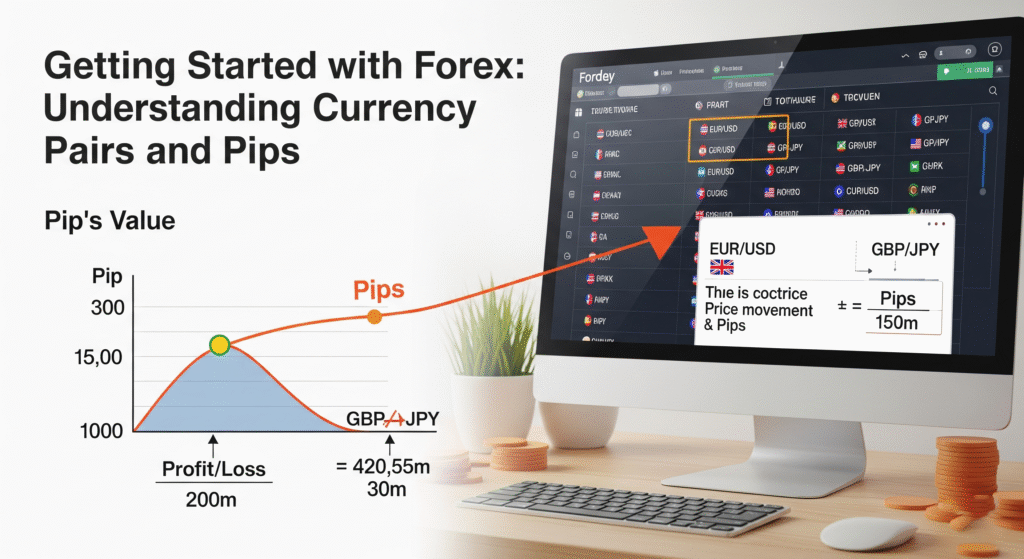He is a Full-time trader and Trading Mentor @ Findependence Trading Academy, with over 18 years of hands-on experience in the stock and forex markets. His journey from being a working professional to achieving financial independence through trading has inspired hundreds of aspiring traders to take control of their financial future.
His trading style revolves around identifying high-probability swing setups in equities and executing precise intraday trades in the forex markets. He treats trading like a business, where rules, clarity, and risk limits aren’t optional—they’re essential. He’s trained over 100+ traders through personalized coaching and structured programs, focusing not just on strategy but on building the mindset and systems that lead to long-term success.
A strong believer in keeping trading simple and practical, He shares real-world lessons drawn from market wins, losses, and years of evolving with changing conditions. He is also the author of “Getting Started with Technical Analysis” and a creator of custom TradingView indicators designed to give traders an edge.
When he’s not charting or mentoring, you’ll find him enjoying a game of Table Tennis.
Table of Contents
Fundamental Analysis Using a Screener: Finding Quality Stocks with Clarity
I’ve spent nearly two decades in the markets—trading, investing, winning, and yes, losing. One of the clearest lessons that emerged over time is this:
There’s a massive difference between a “hot stock” and a “good business.”
Many new investors chase momentum, trends, or tips. But few take the time to ask:
“Is this company fundamentally sound?”
“Would I be comfortable holding it through a bad year?”
“Does it make business sense, not just chart sense?”
That’s where fundamental analysis comes in—not as a buzzword, but as a mindset.
And today, I want to show you how you can do it without a finance degree or spending hours on annual reports—simply by using a well-built screener.
🧠 Why Use a Screener for Fundamental Analysis?
Let’s be honest: digging through hundreds of company balance sheets isn’t realistic for most retail traders.
That’s where screeners become your best friend. They help you filter out noise and surface stocks that meet your chosen criteria.
Think of a screener as your first level of defense. It doesn’t give you buy signals—but it points you toward companies worth studying further.

🛠️ The Screener Criteria I Use (And Why)
Over the years, I’ve refined a personal screener that focuses on five non-negotiable fundamentals. This is the filter I often use when I want to build a watchlist of fundamentally strong stocks.
Here’s the exact criteria:
✅ 1. Debt to Equity < 0.25
Why it matters:
Low debt means the company is not over-leveraged.
It has the freedom to grow, weather downturns, and doesn’t owe too much to the banks.
Companies with low debt often survive downturns better. They also have fewer cash flow problems.
✅ 2. Return on Capital Employed (ROCE) > 20%
Why it matters:
ROCE tells you how efficiently the company is using its capital to generate profits.
A high ROCE means the business is productive and profitable—even at scale.
ROCE above 20% consistently? That’s a sign of a quality, efficient business.
✅ 3. Net Profit > ₹200 Crores
Why it matters:
We want businesses that are not just surviving—but thriving.
A decent profit base ensures the company has actual earnings, not just “potential.”
Size alone isn’t everything, but consistent and meaningful profitability shows real-world traction.
✅ 4. Public Shareholding < 30%
Why it matters:
Lower public shareholding usually means higher promoter skin in the game.
It signals confidence. If promoters still hold 70%+, they’re truly invested in the company’s long-term story.
When insiders hold more, they’re more likely to think long-term—because their own wealth depends on it.
✅ 5. Pledged Shares < 10%
Why it matters:
Pledging shares means promoters have borrowed money against their holdings.
Too much pledging = red flag. It can signal financial stress.
Low pledged shares = cleaner ownership = more stability.
🔍 Putting It All Together: A Quick Example
Let’s say we use these filters on a tool like Screener.in, Tickertape, or even through TradingView’s stock fundamentals section.
When you apply all five filters, you’ll likely go from 5000+ listed stocks to a small, manageable list of maybe 15–30 names.
That’s when real analysis begins.
You don’t buy blindly—you study those shortlisted companies further:
- What sector are they in?
- Are earnings consistent?
- Are they growing year-on-year?
- Do they have pricing power?
- How’s their management track record?
In essence, the screener removes the haystack—so you can focus on inspecting the needles.
“The stock market is filled with individuals who know the price of everything, but the value of nothing.”
— Philip Fisher
🧠 But Isn’t Fundamental Analysis Boring?
Look, I get it.
Fundamentals don’t give you dopamine hits like intraday green candles. They don’t make headlines.
But if you want to build wealth, not just make some lucky gains—then sound businesses are where you plant your seeds.
Think about this:
- How many traders actually hold stocks that went 10x?
- How many of them sold too early because they had no conviction?
Fundamental analysis gives you the conviction to hold.
Technicals tell you when. Fundamentals tell you why.
🧾 Real-Life Observation: When I Didn’t Use a Screener
Let me tell you a short story.
Back in 2013, I invested in a small-cap stock based on a friend’s tip. The stock doubled in three months, and I felt like a genius. But I didn’t bother checking its fundamentals.
Turns out:
- ROCE was below 8%
- Debt was rising
- Promoter had pledged 35% of his shares
In 2014, the company missed earnings. The stock crashed 60%. I had no idea what went wrong.
That one experience taught me that price without business strength is just speculation.
Now? I let my screener do the first filter.
📋 When to Use This Screener
✅ Creating a long-term watchlist
✅ Filtering swing trade ideas with quality backing
✅ Building an investment portfolio for SIP-style buying
✅ During corrections to find strong companies at discounts
You can even export the screener results to Excel and track earnings updates over time.
🚫 What This Screener Won’t Do
Let me be very honest—this is just a tool, not a magic formula.
- It won’t tell you when to buy or sell
- It won’t predict stock rallies
- It might miss some turnaround or small-cap gems
But what it will do is point you toward safe, solid, clean companies with a history of doing things right.
📈 Combining with Technical Analysis
Here’s where things get powerful.
Use the screener to find strong stocks,
Then apply technicals to find timely entries.
For example:
A fundamentally sound stock comes out of a base… shows volume breakout… RSI confirms strength…
Now you’ve got a fundamentally strong and technically timed trade.
That’s a double-layered edge.
🎯 Final Thoughts: Screeners as Smart Shortcuts
If you’ve made it this far, you’re already more serious than most retail traders.
Here’s what I’ll leave you with:
You don’t need to be a CFA to invest wisely.
You just need a process—and discipline to follow it.
This screener helps you start with strength, not speculation.
In the long run, fundamentals win. Because businesses grow—not charts.
Whether you’re a swing trader, a value investor, or somewhere in between—this kind of screener becomes a compass. It won’t make decisions for you, but it keeps you pointed in the right direction.
If you’re looking for additional support, try searching for stock trading classes near me. A good class will equip you with the knowledge and discipline to make better decisions and build a solid trading plan.



